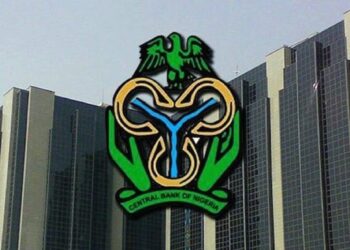The financial world has been eagerly anticipating interest rate cuts from major central banks by the end of 2023. However, recent developments have thrown a curveball at these expectations. Sticky core inflation, tight labor markets, and a resilient global economy have economists reconsidering their outlook.
In this blog post, we delve into the complex dynamics affecting central banks’ decisions, particularly the Federal Reserve, the European Central Bank (ECB), and the Bank of England (BoE). With inflation remaining stubborn, the question arises: Will these central banks opt for aggressive rate hikes to combat rising prices? Let’s explore further.
The U.S. Federal Reserve’s Dilemma:
Despite the headline U.S. consumer price index cooling off since its peak in June 2022, it still hovers at 4.9% in April, well above the Fed’s 2% target. Core CPI, excluding volatile food and energy prices, rose by 5.5% annually in April. The Federal Reserve’s recent increase in interest rates to 5% to 5.25% suggests a tightening stance. Chairman Jerome Powell hinted at a pause in the hiking cycle, but conflicting views within the FOMC emerged from the minutes of the last meeting. Some members still advocate for additional rate hikes, while others anticipate a growth slowdown that might eliminate the need for further tightening. Fed officials, including St. Louis Fed President James Bullard and Minneapolis Fed President Neel Kashkari, caution that sticky core inflation might necessitate prolonged monetary policy tightness and additional hikes later in the year.
The ECB’s Balancing Act:
The European Central Bank faces a similar challenge, having reduced the pace of its rate hikes from 50 basis points to 25 basis points in May. With the benchmark rate at 3.25%, not seen since November 2008, headline inflation in the euro zone rose to 7% year-on-year in April. However, core price growth unexpectedly slowed, triggering debates about the appropriate rate hike pace for the ECB. While the euro zone’s first-quarter economic growth of 0.1% fell below expectations, Bundesbank President Joachim Nagel insists on the necessity of several more rate hikes, even if it risks pushing the economy into a recession. Former Bundesbank executive board member Andreas Dombret emphasizes the importance of the ECB’s commitment to rate hikes despite the challenging phase of sticky inflation.
The BoE’s Tough Inflation Challenge:
The United Kingdom faces an even tougher battle against inflation compared to the U.S. and the euro zone. In April, the annual consumer price inflation rate decreased from 10.1% in March to 8.7%, above both consensus estimates and the Bank of England’s forecast of 8.4%. Core inflation, a greater concern for the BoE’s Monetary Policy Committee, surged from 6.2% in March to 6.8%. These persistently high inflation levels, nearly double those of the U.S. and considerably higher than in Europe, have led traders to anticipate further interest rate hikes to rein in price rises. Sanjay Raja, chief U.K. economist at Deutsche Bank, explains that supply shocks, de-anchored inflation expectations, reduced promotional discounting, and potential margin building are keeping prices from normalizing as quickly as traditional models suggest. Deutsche Bank’s forecast for the terminal rate stands at 5.25%, highlighting the need for the MPC to push rates higher and further than initially intended.
The Divergence of Expectations:
While markets assign a 35% probability for the U.S. target rate to end the year between 5% and 5.25%, with
the most likely range by November 2024 at 3.75% to 4%, there are divergent views on the future path of monetary policy. Some economists argue for a more aggressive tightening approach, while others anticipate a reversal of the current trajectory by year-end. The ECB and BoE also face similar uncertainties regarding the optimal course of action.
Bottom line:
As central banks grapple with sticky inflation, the pressure to make the right monetary policy decisions intensifies. The Federal Reserve, ECB, and Bank of England find themselves at critical junctures, with varying views on interest rate hikes and the potential impact on their respective economies. Striking the right balance between combating inflation and supporting economic growth becomes paramount. However, uncertainties persist, and risk management considerations will shape the central banks’ future actions. The road ahead remains challenging, and the stakes are high for achieving both price stability and sustained economic growth.










